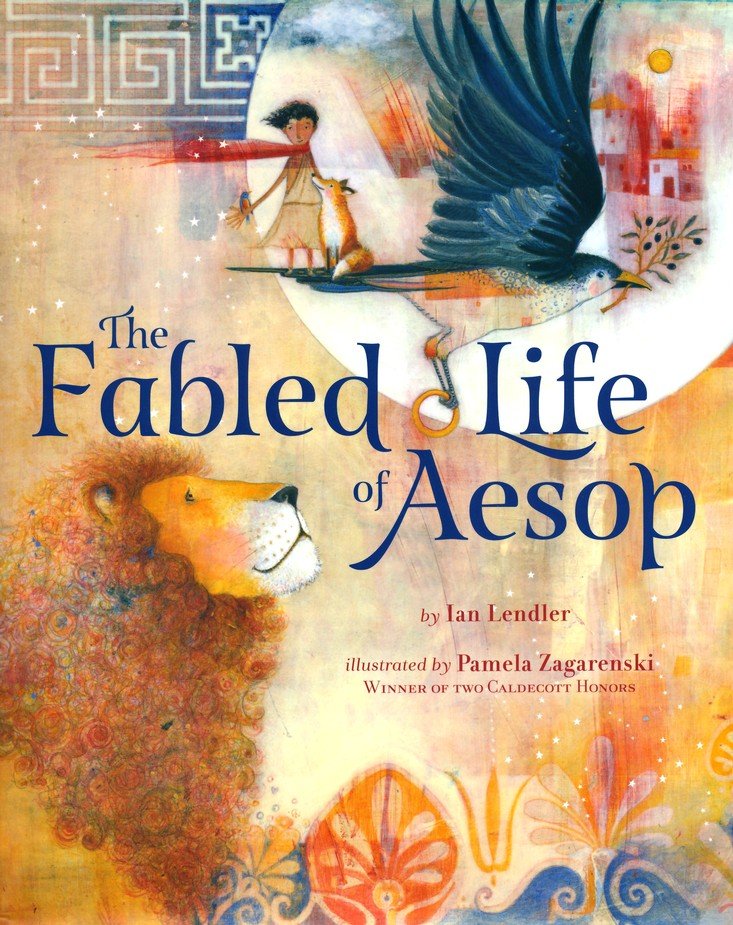
For many years, I have been a fan of ancient cultures, and I have several copies of Aesop’s Fables. But I am also a great fan of Pamela Zagarenski’s illustrations, and when I saw The Fabled Life of Aesop, I couldn’t help myself. I had to buy yet another title about Aesop. As it turns out, however, this book is an excellently written and magically illustrated picture book biography, as well as a venture into ancient Greece, and a book of fables. In this post, I’ll discuss the merits of this book, on several levels.

The Author & The Illustrator –
“Ian Lendler is the author of the acclaimed Stratford Zoo graphic novel series and the picture books, Undone Fairy Tale, Saturday, and One Day A Dot. He lives near San Francisco, CA.
“Pamela Zagarenski is the winner of two Caldecott Honors. The books she has illustrated have also been Booklist Editor’s Choices, Horn Book Fanfare and Bulletin Blue Ribbon books, winners of Bank Street’s Claudia Lewis Award, and translated into many languages.
“Suitable for ages 4 – 7 (and adults!), ISBN 9781328585523
Published by Houghton Mifflin | May 2020 | HB | 64 pages
The text of The Fabled Life of Aesop is divided into two [perhaps three or more] sections. The first 16 pages of the book are a biography of the poet Aesop, and retellings of some of his fables are on most of the final pages. But a postscript follows the fables as follows:
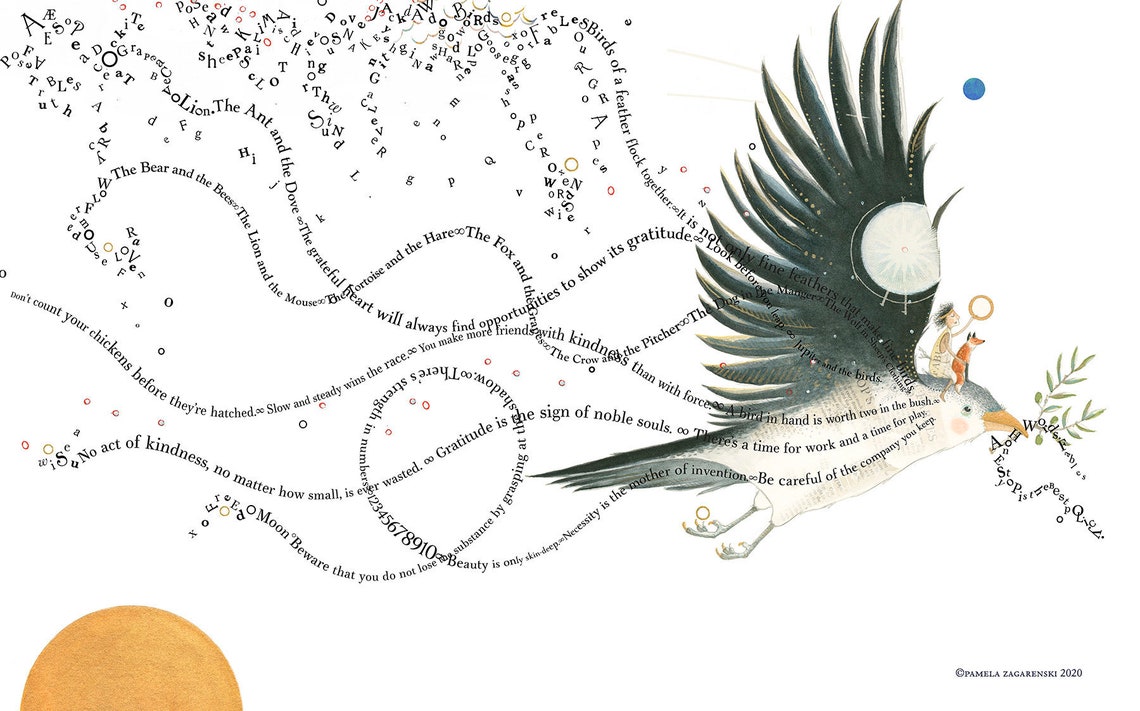
Image Credit: Pamela Zagarenski
“…he granted Aesop’s wish. For the first time in his life, Aesop was free.” The Fabled Aesop, p. 53.
Image Credit: Pamela Zagarenski mos
“Soon, everyone had heard about the slave who was so wise that he had been set free. … His stories were repeated in homes and town squares for generations. For centuries… until one day someone gathered them together in a book and called them Aesop’s Fables. It became one of the most famous popular books in history.” The Fabled Aesop, pages 54, 56.
One of the best features of the writing of The Fabled Aesop is that the text meanders from Aesop’s actual fables to biography to a reference to Aesop’s fables–for the purpose of making a point. Let’s take a look at the following page, which was in the front of the book–in what I would consider to be the biography section:

Image Credit: Pamela Zagarenski
During the first pages of the book, the author endeavors to tell a bit about Aesop and also to explain what a fable is. He does the latter by alluding to some of Aesop’s Fables, without actually telling the story of the fable. In doing so, the author has managed to “show” and not “tell,”
Show Don’t Tell
As the author employs this technique, he is “showing” and not “telling,” and indeed, this is a characteristic of good writing,
Another characteristic of good writing–especially of writing children’s biographies–is to weave some magic into the telling.
The author alludes to the fable of the lion and the mouse to explain that in ancient Greece, slaves and other subjugated people told innocent-seeming stories about animals as a type of code. They did this to escape possible punishment for their beliefs that often ran contrary to the beliefs of their superiors.
Like in the above image, the slaves were the mice, and the rulers were the lions,
“One day, a mouse accidentally stepped on a sleeping lion. The lion woke and grabbed the mouse.
“Let me go!’ begged the mouse. ‘Someday I’ll repay you.’
“The lion laughed at the idea of a puny mouse helping him. But he let the mouse go.” The Fabled Aesop, pg. 12,
The above passage is a foretelling of what happened to the slave Aesop. His owner set him free. [At least that is what many scholars believe happened, No one is quite sure of the details of Aesop’s life.]
Certainly, the author infuses some magic in his show-don’t-tell writing style, but Pamela Zagarenski was the greatest magic maker for the book The Fabled Life of Aesop. Her illustrations are unbridled magic.
\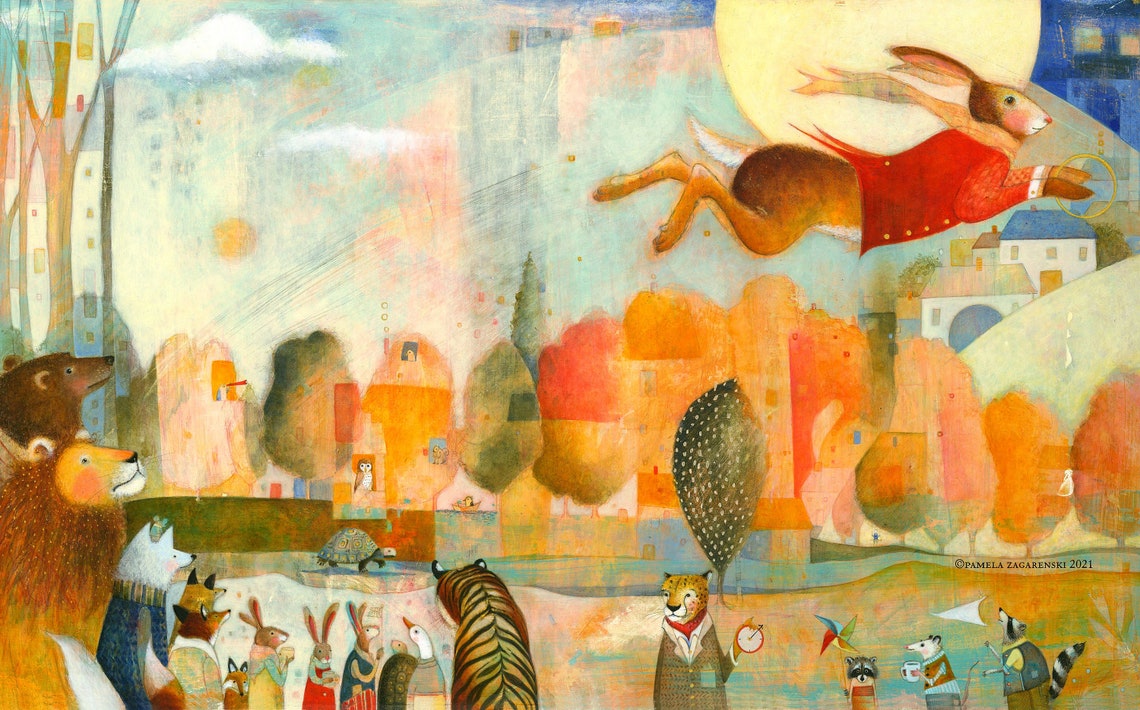
The Tortoise and the Hare – Image Credit: Pamela Zagarenski
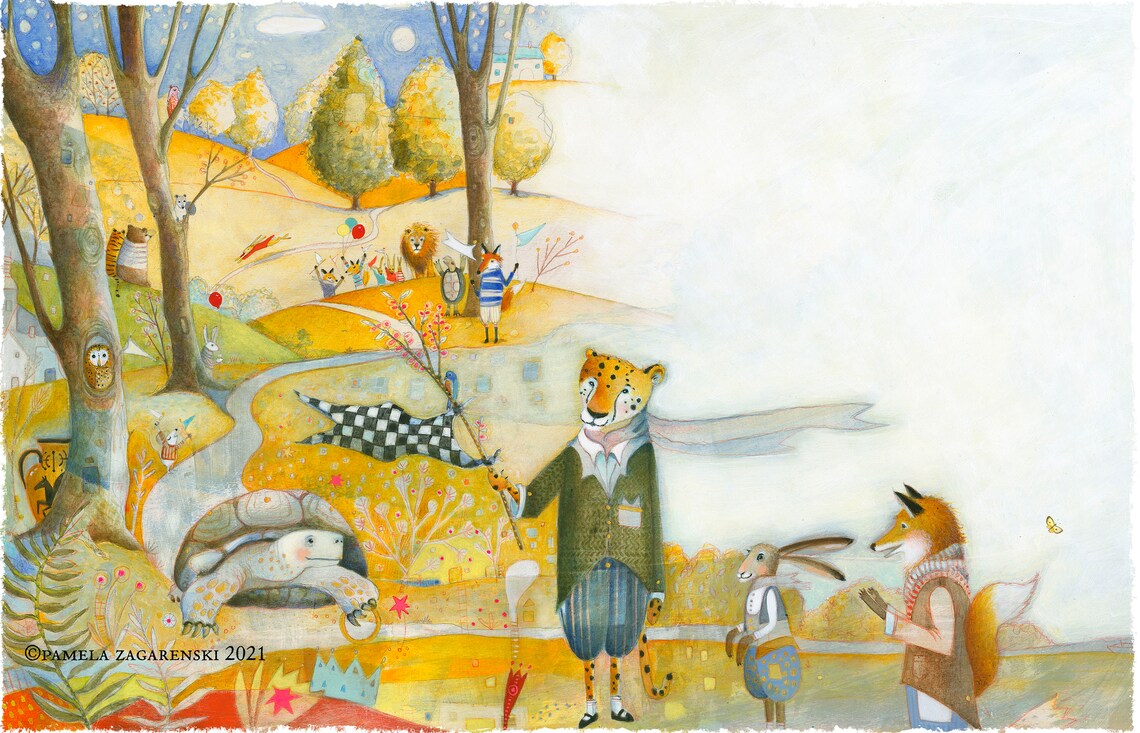
The Tortoise and the Hare – Image Credit: Pamela Zagarenski
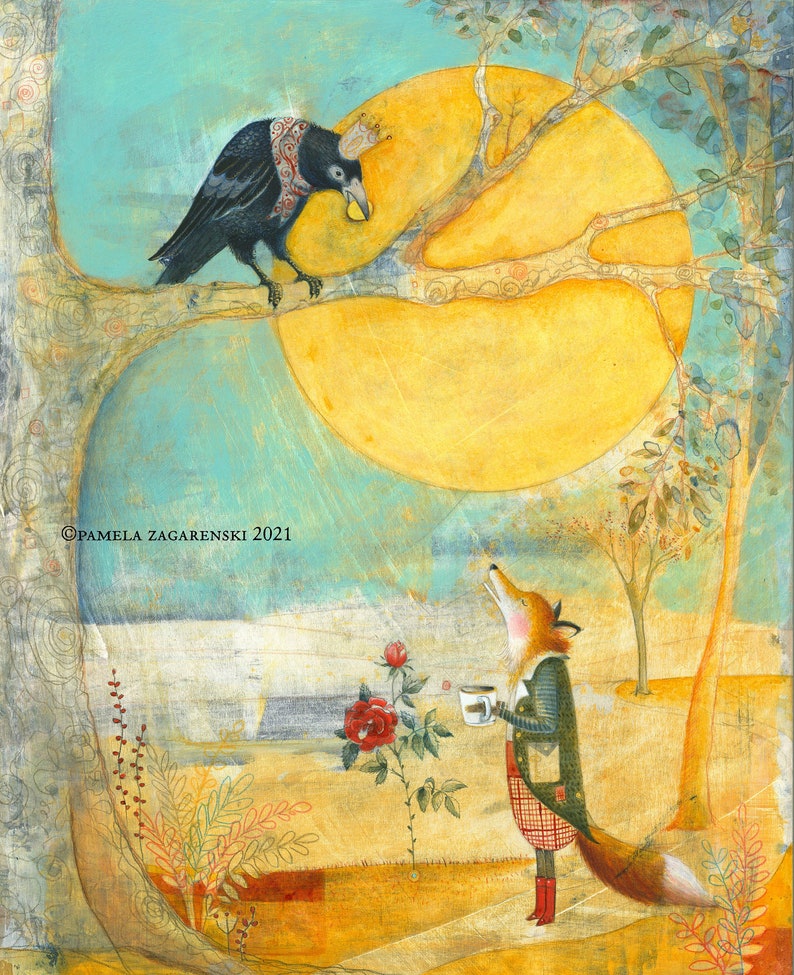
The Fox and the Crow – Image Credit: Pamela Zagarenski
I have every book that Zagarenski has illustrated. Her work is absolute joy. She is one of my favorite illustrators, and because of her art, The Fabled Life of Aesop is much more than just another biography. It is a trip over the rainbow,